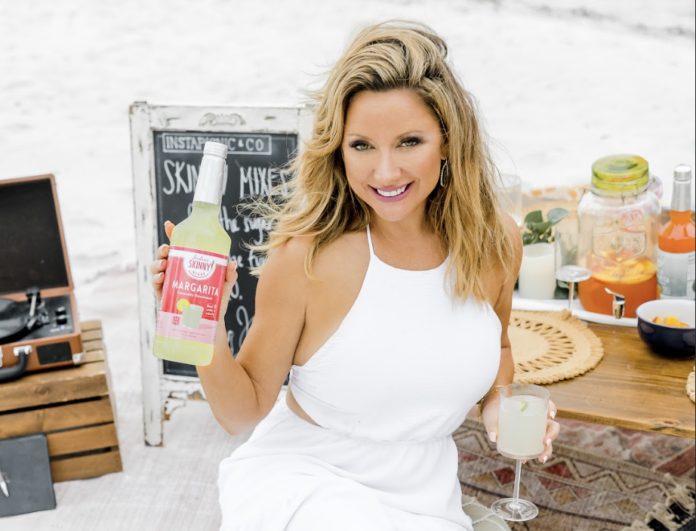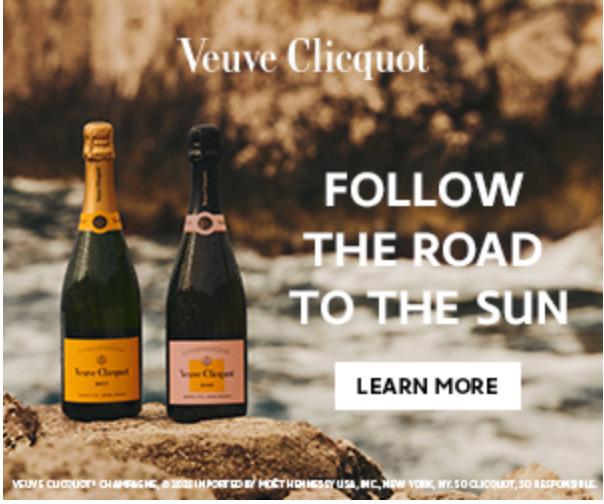Yum! Jordan’s Skinny Mixes Reveals Tasty New Flavors in Exclusive Interview for ExpoWest 2023
Say yes if you love coffee. Say yes again if you love cocktails. Say yes a third time if you love ‘em, but wanna be healthier and save some money.
If you said yes to *any* of the above, you’re going to want to listen, because we just had twenty minutes with the woman who makes all those things happen for you.
This week at ExpoWest 2023 Jordan’s Skinny Mixes has a lot to share!

Their Naturally Sweetened line of margarita mixes is made with real lime juice and sweetened with agave and contains 75 % less sugar and calories than other leading brands. The four margarita mixes flavors are Classic, Peach, Spicy, and Strawberry Key Lime, and they do not contain any artificial sweeteners, flavors, or colors.

Their natural line of skinny syrups is available in 4 guilt-free flavors, including Vanilla Bean, Salted Caramel, Cinnamon Dolce, and Chocolate Mocha, for your coffee, tea, protein shakes, baking, or just about anything.
Jordan’s Skinny Mixes was founded in 2009 by female entrepreneur Jordan Engelhardt. The beverage brand was created with the simple desire to enjoy a margarita that wasn’t loaded with sugar and empty calories. Now with over 100 products, this female-led team is on a mission to craft beverages that cut the sugar and keep the fun from coffee ‘til cocktails.
Skinny Mixes can now be found in over 13,000 specialty retail locations across the United States, Canada, Australia, and Europe, including Target stores, Skinnymixes.com, and Amazon.
Jordan Engelhardt is an impressive person, so when I had the chance to meet up and have a conversation, it was an easy yes.
Just to give us some background, what were you up to before launching back in 2009?
Back in 2009 I was a recent college graduate working in real estate as an appraiser. I launched this product [Jordan’s Skinny Mixes] right when the recession was basically at its peak. It had just started and the market crashed pretty heavily in Florida where I was living at the time.
So I found myself without work, and this idea that I felt pretty strongly about.
What are some of the biggest changes you’ve navigated in the industry over those 10 years?
Oh, there’s been a lot. The world has evolved much more to natural products, which is why we’re here at Expo West as we just have launched our new natural line so this is pretty big for us.
Also, the customization of flavors over the years have just gotten more and more prevalent.
Millennials, and the population in general, really like the variety of flavors, and being able to customize everything. And then Covid really drove at-home consumption of coffee. So I think all of those trends over the last 10 years have really helped drive this company’s growth.
When Covid forced everyone to stay home, did that become a “lucky opportunity” for the business and boost at-home coffee drinking?
It was certainly fortunate in some ways, but in many other ways [not as much]. We were selling to many grocery accounts. We’re selling to a lot of specialty stores which had no choice but to close their doors. So we lost quite a bit of distribution during that time, but were able to make up for it online [with website e-commerce]. So [with market] penetration and trying to drive consumer growth, in that capacity, yes, it was fortunate. But it was also a little bit scary [for us], like many other businesses at the same time.
What is the biggest misconception in general about skinny mixes?
People don’t necessarily understand the versatility of our syrup and how you can not only use it for coffee, but you can use it for baking and protein shakes, and just anything.
Flavored syrups are great for iced teas. You can simply just add a dash to water and transform your water.
Once we got the samples this week, the amount of random things we’ve tried [the skinny mixes] with just to see how it’d go.
I love it! It’s part of the fun and part of the great relationship we have with our consumers. They
have so much fun experimenting and making these recipes, and then including us on that.
So [experimenting with the syrups on different foods] just became a benefit over the years. It’s certainly something we think about now.
We have this really amazing closed Facebook group that has really active members. It’s called “Skinny mixes. Share your recipe”. You can see the amount of creativity that our users come up with and then they share their recipes.
One person put it with sweet potatoes, they used it on egg sandwiches. Interesting wild things that you would never think about.
Can you share a little bit about the inspiration behind the line and how you develop the flavors?
Yes, of course. We have a great relationship with our consumers, and they asked for it. When they ask, we listen. We do a lot of innovation. We launch a lot of flavors.
So that’s where it came from and it’s really done. We’ve gotten into Target with this line. We take a lot of pride in listening to what our customers want, and this is what they wanted
What’s the development process like for these flavors?
We have several partnerships with different food labs and beverage labs. We start by verbally explaining to them what we’re looking for. We have a big panel at our company and we just do a lot of tasting. It often takes quite a bit of time because we take a lot of pride in making sure it tastes exactly what we were visualizing.
We can come up with anything from “Mermaid” to “Unicorn”. The different food labs across the country are amazing and they make it happen.
It’s a slow, methodical approach. Then we have a larger tasting panel and we keep going until we find just the right mix.
That’s incredible. What’s the timeline from concept to finished product?
It varies widely. It could take a couple of months or it could take over a year. Probably on average, about 4 to 6 months.
Do you ever try to create flavors and they don’t end up working out?
Oh, it happens all the time, especially in the beginning. We’re innovating constantly. Trends change fairly quickly. We’ve been fortunate with a robust website where we can test things quite easily and pivot.
Are there any teases as to what flavors might be next?
Well at the show we’re launching our naturally sweetened flavors. French vanilla, caramel, peppermint, mocha and pumpkin spice. Maybe some new seasonal offerings after that. We’re constantly innovating, constantly looking at new categories.
Switching over to coffee, what inspired you to launch coffee syrups?
12 years ago the company started with cocktail mixes. With the popularity of Starbucks and people going through the drive through and having what they thought was guilt-free drinks but was not necessarily guilt free.
They didn’t realize how many calories they are consuming with their Frappuccino or their latte.
It immediately seemed like another way to really help people not have such a sugar laden beverage every single day.
That’s why the coffee syrup was developed. Since cocktail mixes are so seasonal, coffee syrup is something that consumers consume daily. So it was a natural extension for the product line with the coffee syrup
You have some new coffee flavors launching as well
Listening to the trends and looking at the popularity of the most popular flavors just through our [tasting] panel. and you know, just having a great team that’s out and about, and looking at menus, and using some common sense, if you will, and reading up on trends, it’s then a 3 prong process.
You’re getting a lot of positive attention at ExpoWest. What in your opinion, makes for a successful trade show?
Taking the step to take the risk to be there and have your branding there; and be open to meeting consumers and buyers in the trade. We try to make it fun. So we serve cocktails, and we’re going to be serving espresso Martinis today. Yesterday we served Margaritas, and we had a speakeasy happy hour. It helps people really understand the brand, and come by and see us. I think that’s most important, really put your brand out there and your brand’s personality and just have fun with it.
Can you talk a little bit about the mission behind Jordan’s Skinny Mixes?
Our mission summarized is crafting beverages that cut the sugar and keep the fun for a healthier, more flavorful lifestyle and to make everyday moments simply sweeter.
What is your biggest call to action for the audience?
I’d love the consumers to experiment at home. I’d love for them to make their latte at home. Make that morning coffee at home. So many people will say it’s going to be a better experience.
Try our products. You’re going to save calories. You’re going to save time. You’re going to save money.
Shop Jordan’s Skinny Mixes products online and view recipes at https://www.skinnymixes.com/
Check out Jordan’s Skinny Mixes latest and greatest recipes by following on Instagram – @skinnymixes, Facebook- @skinnymixes, TikTok – TikTok , and Pinterest – @skinnymixes



